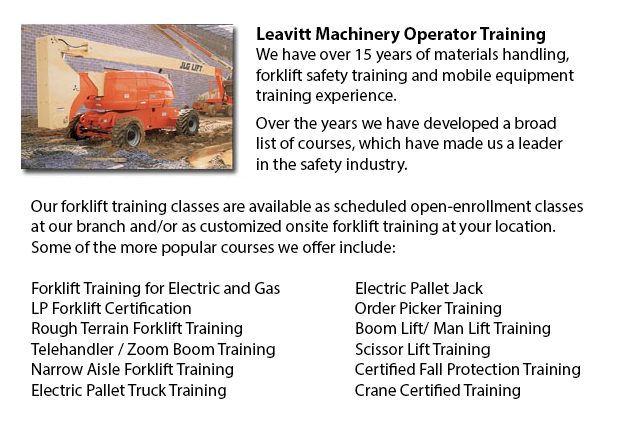
Boom Lift Certification Vaughan - Making use of elevated work platforms allow for work and maintenance operations to be done at elevated work heights that were otherwise not reachable. Workers making use of scissor lifts and boom lifts could learn how to safely operate these devices by acquiring boom lift certification training.
Despite the variety in lift style, applications and site conditions, all lifts have the potential for serious injury or death when not safely operated. Falls, electrocution, tip-overs and crushed body parts can be the unfortunate result of incorrect operating procedures.
In order to avoid aerial lift incidents, individuals should be qualified to train workers in the operation of the specific type of aerial lift they will be making use of. Controls must be easily accessible beside or in the platform of boom lifts made use of for carrying workers. Aerial lifts must never be altered without the express permission of other recognized entity or the manufacturer. If you are renting a lift, ensure that it is properly maintained. Before utilizing, safety devices and controls need to be inspected to ensure they are properly functioning.
Operational safety procedures are vital in avoiding accidents. Operators must not drive an aerial lift with an extended lift (although a few are designed to be driven with the lift extended). Always set brakes. Set outriggers, if available. Avoid slopes, but when needed make use of wheel chocks on slopes which do not go beyond the manufacturer's slope limitations. Adhere to weight and load restrictions of the manufacturer. When standing on the platform of boom lifts, use a safety belt with a two-foot lanyard tied to the basket or boom or a full-body harness. Fall protection is not needed for scissor lifts which have guardrails. Never sit or climb on guardrails.
This course features the following topics: training and certification; safety guidelines to be able to prevent a tip-over; checking the work area and travel path; slopes and surface conditions; stability factors; other guidelines for maintaining stability; weight capacity; leverage; pre-operational inspection; testing control functions; safe operating practices; mounting a vehicle; overhead obstacles and power lines; safe driving procedures; PPE and fall protection; using lanyards and harness; and preventing falls from the platform.
When successful, the trained worker would be familiar with the following: pre-operational inspection procedures; training and authorization procedures; how to prevent tip-overs; factors affecting the stability of scissor and boom lifts; how to utilize the testing control functions; how to use PPE and fall prevention strategies.
-
Forklift License Vaughan
Forklift License Vaughan - Getting a forklift certification or forklift license in North America would require the trainee to do hands-on training in addition to classroom instruction. The provincial, federal and state regulatory bodies are responsib... More -
Forklift Ticket Vaughan
Forklift Ticket Vaughan - Forklifts and the pallet jack is meant for just about the same reason. They work to raise and move supplies and goods from one place to another. This however is where the comparison stops though. With the pallet jack, the be... More -
Aerial Lift Certification Vaughan
Aerial Lift Certification Vaughan - Aerial Lift Certification is for individuals who need an in-depth understanding of aerial lift safety. Operators and inspectors, supervisors, maintenance workers and construction craftsmen should perform a certific... More -
Manlift Certification Vaughan
Manlift Certification Vaughan - The Manlifts and Elevated Platforms course provides training on the rules, regulations and proper application of safe operating measures and work practices included in everyday activities for those who work making use... More -
Heavy Equipment Training Vaughan
Heavy Equipment Training Vaughan - The two most common kinds of heavy equipment training are categorized into the categories of machines; equipment that is fashioned with rubber tires or those with tracks. The tracked vehicle are heavy duty machines... More -
Boom Lift Ticket Vaughan
Boom Lift Ticket Vaughan - Boom lifts are equipment that has a platform that may be lowered or raised to different heights, thus making this piece of equipment an important necessity in a wide variety of professions. Offered in many different particu... More -
Telehandler License Vaughan
Telehandler License Vaughan - The telescopic handler or telehandler is a frequently used equipment in industrial and agricultural applications. This particular machine is the same in appearance to a forklift and also functions in a similar way, altho... More -
Scissor Lift Training Vaughan
Scissor Lift Training Vaughan - Scissor lifts have to be operated competently to be able to protect the safety of the machinery and the safety of others within the workplace. Operators who are skilled are trained to drive the particular kind of sciss... More

Forklift Training Vaughan
TOLL FREE: 1-888-254-6157
Vaughan, Ontario
forklifttrainingvaughan.com
Email Us
About Us


